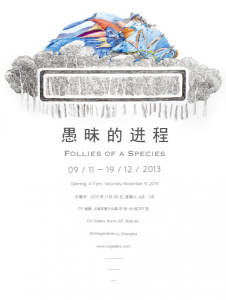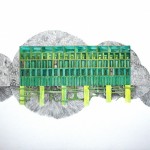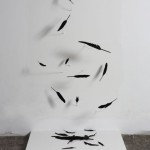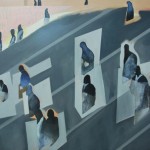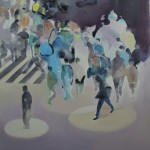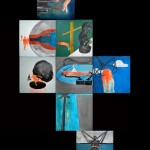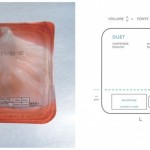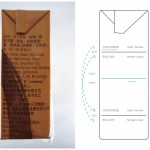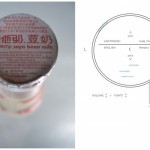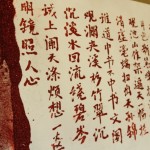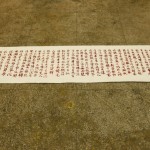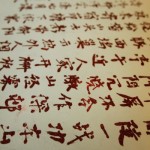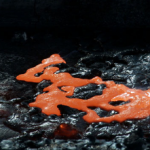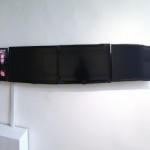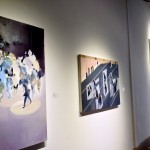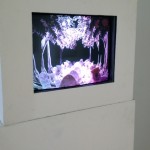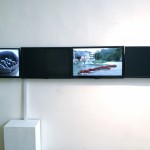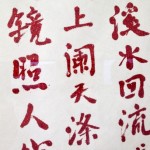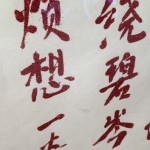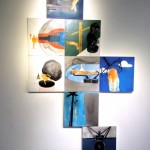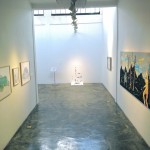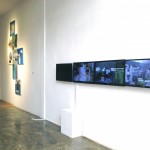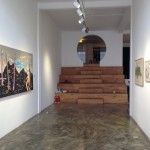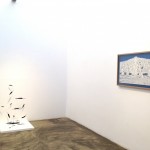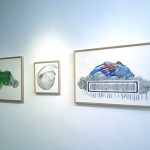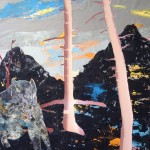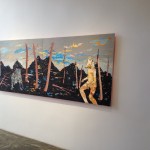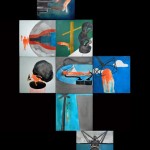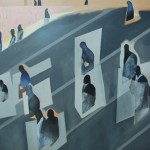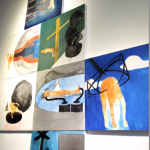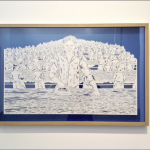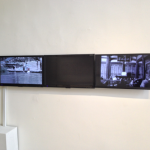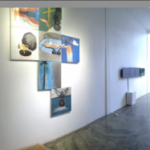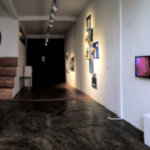Bovey Lee: Artist Statement
Bovey Lee's cut paper explores the tension between man and the environment in the context of power, sacrifice, and survival. These three “motivators,” as she calls them, drive all our desires and behaviors toward one another and the environment. We live in a time when we overdo everything from technology to urbanization to consumption. Her work is informed by our precarious relationship with nature in the twenty-first century, i.e., what we do to the environment with our super machines and technologies and what nature does back to us in reaction.
Chen Hangfeng: Scattered Scenes Along Mei Creek
According to a local family’s book of records, Mei Creek has more than 1,000 years of history, the beginnings of which can be traced back to the Song Dynasty. A number of important scholars and members of the literati originate from the village, their poems having been recorded in the aforementioned family’s chronicles. One series of poems describes 10 scenes along the Mei creek — "Stone horse carrying the mist" and "Snow covering the bamboo forest next to Mei Creek" are just two of several beautifully crafted images inspired by the village. Time has passed, the water of Mei Creek is still running, but these picturesque scenes are long gone. Now characterized by white "snow," red balls, green belts and a myriad of other holiday ornaments, the village now produces more than 50% of China’s Christmas exports. All of them are handmade; some are designed and manufactured by the villagers themselves, despite the fact that most of the tools they use to make these Christmas ornaments are actually designed for farming. Somehow, they manage to utilize these misplaced tools to create perfect final products!
Chen Xi: Artist Statement
All three works depict an artificial object disrupting, hiding in, hanging over, or obstructing a natural scene or symbol. Like a musical score, these pieces are both layered and dynamic. This direct pictorial language is intended to engage the viewer in an emotional and philosophical dialogue.
Francesca Galeazzi: Justifying Bad Behaviour
One morning I walked on the fresh snow with a gas cylinder in my arms, containing 6kg of CO2. I took it across a pristine ice field of the Jakobshavn fiord, home to one of Greenland’s largest and most active glaciers, losing 20 million tons of ice every day.
I carried it until I found a wonderful place, overlooking a strip of dark frozen water in which majestic white icebergs were silently drifting out to the open sea. The sky was pale grey and cerulean with a yellow glow just behind the skyline, making the icebergs stand out in their spectacular ephemerality.
I thought to myself: this is perfect!
I walked to the top of a small hill, I laid the cylinder down, got on my knees and opened the valve. The CO2 came out violently, freezing the air around the nozzle and producing an unpleasant whistle…
ppppsssssssssssiiiiiiiiiisssssss...
When I lowered the cylinder towards the ground, the snow blew off under the jet pressure, as if to symbolise the melting of the Arctic ice cap because of the direct effect of human greenhouse gas emissions.
When the cylinder was finally empty and I discharged its entire CO2 content, I reflected on my premeditated irresponsible act. It was actually not a harmful intervention at all. You see, I had previously offset the emissions generated by this CO2 release through an online Gold Standard Carbon Offsetting scheme.
This made my action Carbon Neutral.
This is great stuff… basically people can go about consciously polluting the world, wasting energy, abusing natural resources and generating large amounts of harmful emissions without feeling guilty at all. People, as well as organisations, can simply pay a small amount to compensate for their ‘bad’ behaviour and become Carbon Neutral!
Do they really think this is good?
Personally, I think this is lazy and inexcusable.
A lot has to be done before we can revert to Carbon Offsetting as an effective mechanism to reduce Carbon emissions in the fight against Climate Change. First significant changes in societal behaviour are necessary to reduce our environmental impact, encompassing the way we live, travel, eat, produce and consume.
The cost of Carbon offsetting is too low to drive change.
Urgent change is needed and must come from within us.
Francesca Galeazzi
Li Xiaofei: Assembly Line - No. 11
Assembly Line - No. 11 (Three - Channel Video)
Silent / Color / HD / PAL / 04'00', 04'00', 04'00' / 2012
The coal briquette was the predominant source of energy in China during the 18th, 19th and early 20th centuries. Within the last few decades, China's urbanization process has rapidly progressed. Oil and coal, rather than coal briquettes, are what keep most cities running now. This said, the material is still widely used (albeit on a smaller scale than in the past), meaning that there's still a market for it today.
During production, pieces of briquette emerge from a machine. Each has its own body temperature — this is the beginning of its life, if 'life' can be defined in this way. We tend to believe that a slowly depleting individual existence has the potential for endless imagination, consciousness, an unbowed and unbending character. Born from machines, these briquettes start their journey not organically but produced in modular sequence, each seemingly identical to the next.
Magdalen Wong: DUETS : Hong Kong Diets, 2006
A series of four sound duets. Food products symbolic of Hong Kong are translated into sound narratives, employing their package design as scores. This series of duets examine the rhythm in Hong Kong's fast food culture and its bilingual complex.
Zheng Wenxin: Artist Statement
As time goes by, we don't know what awaits us is it danger or a sanctuary. Those who are paralyzed or accustomed to disguising themselves always have to face themselves at some point, no matter in a private space or in the dream. The city which feels like a maze is actually a private place. We hide ourselves in this crowd. Changes occur from the inside to the outside, from outside to inside, but still one cannot escape the infinite black hole.
